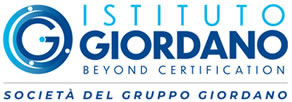
SECTION CONTACTS
Adelina Cardenuto
Tel. 0541 322.362
E-mail certificazionesistemi@giordano.it
End of Waste Regulations
(EU) No 333/2011 and (EU) No 715/2013
End of Waste Regulations
End of Waste, translated into Italian as Cessation of Waste Status, refers to a recovery process performed on a waste, at the end of which it loses this status and acquires that of a product. It should therefore be understood not as the end result, but as the process that actually allows a waste to return to its useful role as a product.
The context is that of the revision of European waste legislation contained in Directive 2006/12/EC, which the EU Parliament and Council have done by adopting Directive 2008/98/EC of 19 November 2008, still known today as the Waste Framework Directive.
This Directive places waste prevention at the top of the waste management hierarchy, followed immediately by preparation for re-use.
To date, the following regulations have been adopted at EU level concern:
The national criteria adopted for ceasing to be waste concern:
End of Waste, translated into Italian as Cessation of Waste Status, refers to a recovery process performed on a waste, at the end of which it loses this status and acquires that of a product. It should therefore be understood not as the end result, but as the process that actually allows a waste to return to its useful role as a product.
The context is that of the revision of European waste legislation contained in Directive 2006/12/EC, which the EU Parliament and Council have done by adopting Directive 2008/98/EC of 19 November 2008, still known today as the Waste Framework Directive.
This Directive places waste prevention at the top of the waste management hierarchy, followed immediately by preparation for re-use.
To date, the following regulations have been adopted at EU level concern:
- Regulation 333/2011: iron, steel and aluminium;
- Regulation 1179/2021: glass;
- Regulation 715/2013: copper and copper alloys.
The national criteria adopted for ceasing to be waste concern:
- DM 22/2013: secondary solid fuels (CSS)
- DM 69/2018: asphalt mixes;
- DM 62/2019: personal absorbent products (PAP);
- DM 78/2020: vulcanised rubber from used tyres;
- DM 188/2020: paper and cardboard;
- DM 127/2024: inert construction and demolition waste.












 Do you need more information about our services?
Do you need more information about our services?